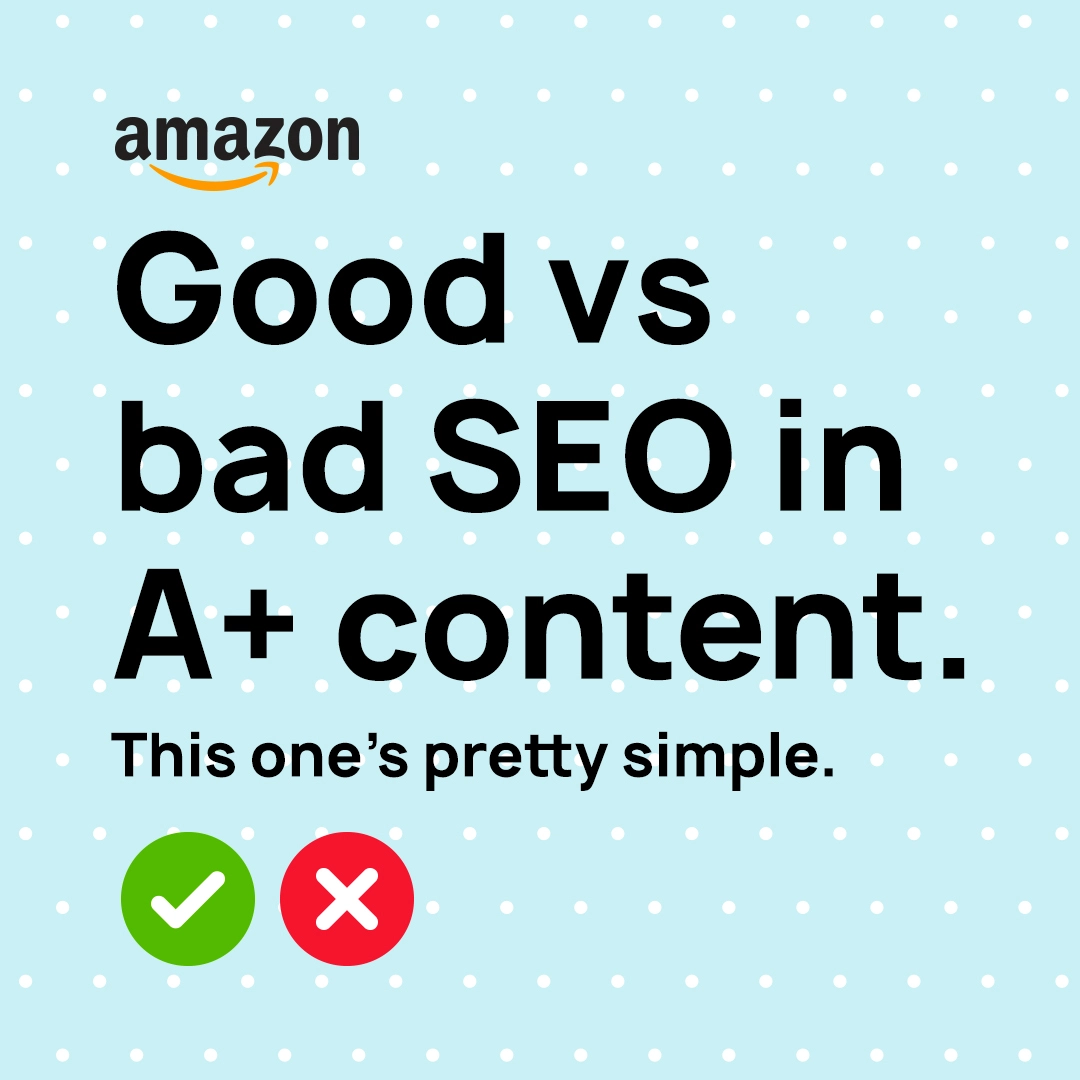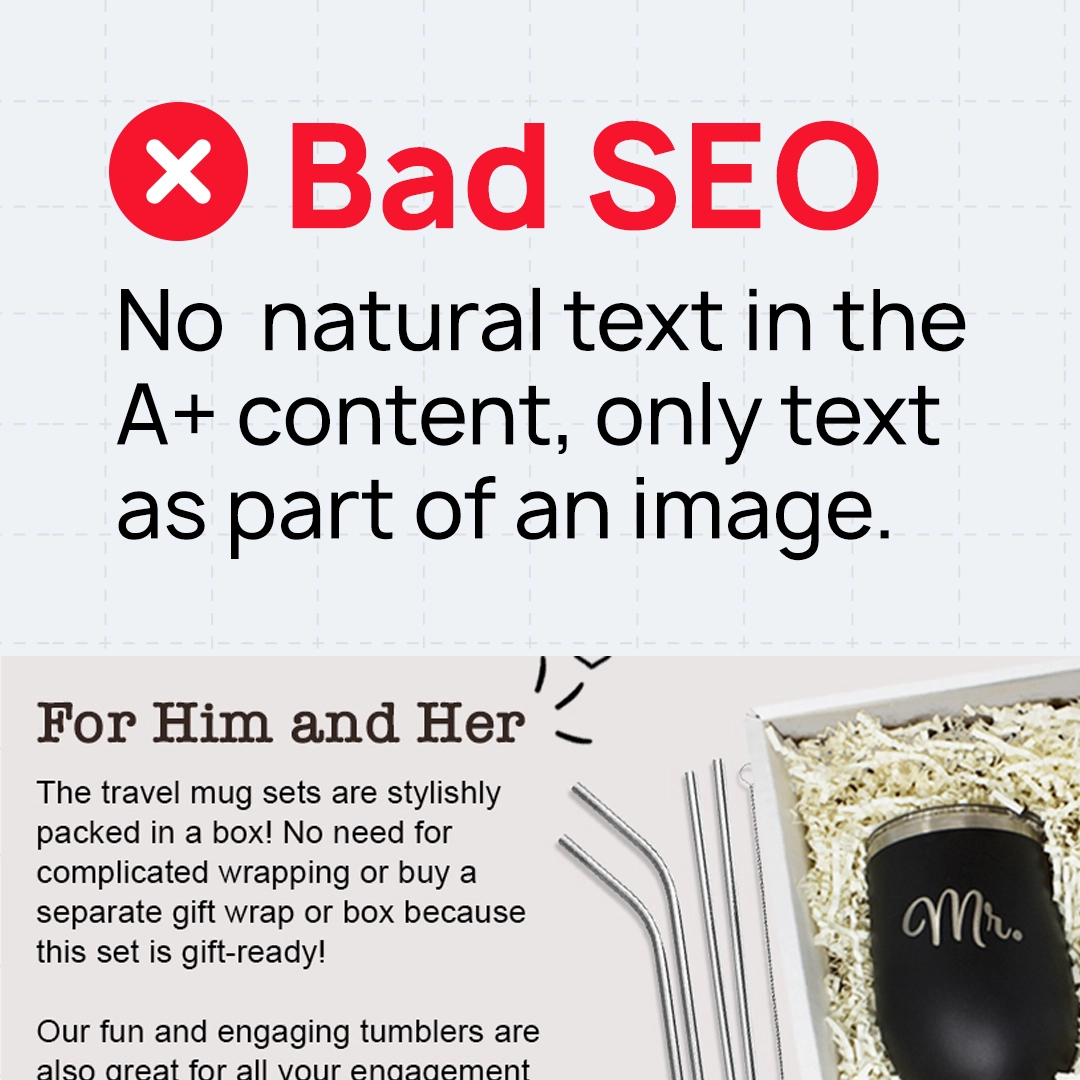Want to solve brand differentiation challenges for Amazon FBA and FBM sellers? Read on to discover how!
Brand differentiation is one of the most crucial yet often overlooked aspects of selling on Amazon. Many businesses focus solely on short-term gains—such as optimizing for quick sales or chasing the latest trends—without realizing that without a strong, distinct brand, long-term success is nearly impossible to achieve.
Whether you’re an Amazon FBA (Fulfillment by Amazon) seller or operating under the FBM (Fulfillment by Merchant) model, brand differentiation is your key to standing out in a saturated marketplace.
However, the road to establishing a unique brand presence on Amazon is filled with challenges, each specific to the fulfillment model you choose. FBA and FBM sellers face distinct obstacles that can hinder their efforts to create a recognizable and trusted brand.
Understanding these challenges is the first step toward overcoming them with proven strategies that will help your brand not only survive but thrive in the competitive world of Amazon.
The Hidden Pitfalls of Amazon FBA: Challenges to Brand Differentiation
Amazon FBA streamlines the selling process, offering perks like Prime eligibility and hassle-free fulfillment. While these benefits can boost your sales, they also pose significant risks to your brand differentiation.
By relying heavily on Amazon’s infrastructure, you may struggle to maintain what makes your brand unique in a crowded marketplace. Below are the key challenges FBA sellers face in standing out from the competition.
1. High Competition
High competition on Amazon makes it challenging for FBA sellers to differentiate their brands. With many sellers offering similar products and targeting the same high-traffic keywords and categories, visibility becomes diluted.
This saturation can cause your brand to blend in with others, making it difficult to stand out, build a loyal customer base, or establish a unique brand identity.
Example Scenario
Imagine an FBA seller identifies water bottles as a trending product and decides to sell them on Amazon, leveraging FBA for its logistical convenience and Prime eligibility. However, after launching, they discover that the market is heavily saturated with thousands of similar water bottles.
Despite their efforts to highlight unique designs or eco-friendly materials, the overwhelming competition makes it nearly impossible for their brand to stand out. Customers perceive the product as just another water bottle, and the seller’s differentiation efforts struggle to gain traction.
Strategies to Combat or Prevent This Challenge
- • Niche Down: Rather than competing in a broad, overcrowded market, focus on a specific niche that aligns with your brand’s unique strengths. For example, target “eco-friendly collapsible water bottles for hikers” instead of generic water bottles. This approach reduces direct competition and allows your brand to cater to a more focused audience.
- • Utilize the Product Opportunity Explorer: Leverage Amazon’s Product Opportunity Explorer to identify less saturated categories and niches. By selecting categories with lower competition, you can position your brand more effectively, allowing your unique value proposition to stand out.
- • Focus on Unique Selling Points (USPs): Clearly highlight what sets your brand apart, such as unique features, superior materials, or exceptional customer service. Ensure these USPs are prominently featured in your product listings, images, and descriptions to help differentiate your brand in a crowded market.
2. Limited Control Over Branding
A major drawback of Amazon FBA is the limited control it gives sellers over their branding. By relying on Amazon for fulfillment, sellers lose control over packaging, presentation, and delivery, making it difficult to differentiate their brands.
Amazon’s standardized processes can strip away the personal touches that set a brand apart, making it harder to create a memorable and unique identity.
Example Scenario
An FBA seller offering a luxury skincare line invests heavily in high-quality ingredients and elegant packaging to create an upscale brand image. They aim to provide loyal customers with a grand unboxing experience that reflects the exclusivity of their brand, perhaps by including personalized thank-you notes, luxurious wrapping, or special samples.
However, with Amazon handling the fulfillment, the products are shipped in generic Amazon-branded packaging, leaving the seller with no control over how they are presented to the customer. This standardized experience diminishes the premium feel of the brand, making it difficult to convey the luxury and care that sets the products apart.
Strategies to Combat or Prevent This Challenge
- • Enhanced Brand Content (EBC) and A+ Content: Use EBC and A+ Content to showcase high-quality images and detailed descriptions on your product listing. This helps convey your brand’s unique value and luxury status, compensating for the lack of control over physical packaging.
- • Branding Inserts: Include branded inserts like thank-you notes or discount codes inside the product packaging. These subtle touches reinforce your brand identity and add a personal touch, even within Amazon’s packaging constraints.
- • Amazon Customization Programs: Leverage Amazon’s customization options, such as custom engraving or packaging, to offer a more personalized experience. This adds a tailored touch that aligns with your brand’s image.




3. Restricted Communication with Customers
FBA sellers face challenges in differentiating their brands due to limited direct communication with customers. Since Amazon handles most customer service, sellers miss opportunities to build strong relationships, address specific concerns, or offer personalized experiences.
Generic, standardized responses from Amazon can dilute your brand’s identity, making it harder to stand out.
Example Scenario
A premium kitchenware FBA seller offers high-end knives, and a customer purchases one expecting top-notch quality. However, the customer feels the knife doesn’t meet their expectations and reaches out with a complaint, hoping for a personalized response.
Since Amazon handles customer service, the customer receives a standard, impersonal reply, leaving them frustrated and undervalued. This experience results in a negative review, damaging the seller’s brand reputation due to the lack of direct communication.
Strategies to Combat or Prevent This Challenge
- • Monitor and Respond to Reviews: Regularly monitor customer reviews and respond to both positive and negative feedback. Engaging with reviews shows that you care about your customers and can help mitigate damage from negative comments.
- • Be Descriptive and Transparent in Product Listings: Ensure your product descriptions are detailed and clear, with high-quality images and accurate specifications. This transparency helps manage customer expectations and reduces the risk of misunderstandings.
- • Use Follow-Up Emails: Use Amazon’s follow-up email system to thank customers, ask for feedback, and offer assistance. While you can’t solicit reviews directly, these emails help build a connection and encourage customers to reach out with any issues.
4. Copycat Products
Copycat products pose a significant challenge for FBA sellers, impacting brand differentiation. Even if your product is unique, competitors can easily replicate your features, design, or branding.
On Amazon, where competitors can study your listings and feedback, copycat products flood the market, making it hard for your brand to stand out and maintain its unique identity.
Example Scenario
An FBA seller who initially had a reseller selling their luxury skincare products on Amazon under an agreed-upon arrangement faces a challenge after the relationship ends. The reseller hijacks the product listing, selling what appears to be the same products under their own name.
They might have sourced these products by purchasing returned items or through other means, diluting the original brand’s unique features and qualities. This confusion can harm the brand’s reputation, making it harder to differentiate the product from knock-offs.
Strategies to Combat or Prevent This Challenge
- • Enroll in Amazon Brand Registry: Enroll in Amazon’s Brand Registry to access tools that protect your intellectual property and monitor for infringement. This program helps you more effectively take down counterfeit or hijacked listings.
- • Use Enhanced Brand Content (EBC) and A+ Content: Utilize EBC and A+ Content to create visually rich product listings that highlight your brand’s unique features and value proposition. This makes it more difficult for copycat sellers to replicate your brand’s presentation.
- • Monitor Listings Regularly: Regularly check your product listings for signs of hijacking or unauthorized sellers. Use Amazon’s alerts or third-party tools for early detection and quick action against potential hijackers.
- • Purchase Suspected Hijacked Inventory: If you suspect unauthorized sellers, buy a few units to verify authenticity. If they are indeed your products, take steps to have the listings removed or report the issue to Amazon.
5. Amazon’s Algorithm Favoring High Sales Volume
Amazon’s algorithm favors products with high sales volumes, making it challenging for new or smaller FBA sellers to gain visibility. This bias towards established brands with strong sales histories often leaves unique products from newer sellers struggling to stand out and differentiate their brands.
Example Scenario
Consider a new FBA seller who has just launched a line of innovative, eco-friendly kitchen gadgets. Despite their product’s unique design and sustainable materials, they find it challenging to generate sales.
The problem isn’t the product itself, but rather the fact that their listing is buried in search results. Larger, more established brands offering similar, but less innovative, products are dominating the search results because they have a higher sales volume.
Strategies to Combat or Prevent This Challenge
- • Optimize Product Listings: Fully optimize your listings by using relevant, high-traffic keywords and clear, detailed descriptions. Focus on both popular and long-tail keywords, and use high-quality images to improve visibility and conversion rates.
- • Run Promotions and Discounts: Offer time-limited discounts or promotions to generate sales spikes, temporarily boosting your product’s ranking. Once visibility improves, adjust pricing strategies to maintain momentum.
- • Leverage Enhanced Brand Content (EBC): Use Enhanced Brand Content or A+ Content to create visually appealing, informative product pages. This helps your product stand out and encourages higher customer engagement and sales.
Brand Differentiation Strategies and Challenges for Amazon FBM Sellers
Amazon FBM allows sellers to maintain more control over their business operations, from inventory management to shipping and customer service. This control might seem like an advantage in establishing strong brand differentiation.
However, FBM sellers face their own unique challenges that can complicate efforts to stand out. Despite the ability to manage key aspects of the business, FBM sellers often struggle with visibility, customer trust, and other factors that can impact brand differentiation.
1. Limited Visibility and Buy Box Competition
For Amazon FBM sellers, limited visibility, especially in competing for the Buy Box, is a major challenge for brand differentiation. The Buy Box is often dominated by FBA sellers due to Amazon’s preference for faster shipping and higher ratings, making it difficult for FBM sellers to gain traction and stand out, even with unique products.
Example Scenario
Imagine an FBM seller offering a distinctive line of handmade home decor items. Their products are unique and crafted with care, yet the listings struggle to gain visibility.
Competing products, particularly those fulfilled by FBA sellers, consistently appear higher in search results and dominate the Buy Box. As a result, the seller’s sales are sluggish, not due to a lack of quality or uniqueness, but because they can’t compete with the visibility and convenience offered by FBA sellers.
Strategies to Combat or Prevent This Challenge
- • Offer Competitive Pricing and Shipping: Keep your pricing competitive and offer attractive shipping options to improve your chances of winning the Buy Box. Consider providing free or expedited shipping to make your listings more appealing.
- • Use Amazon Advertising: Invest in Amazon Sponsored Products and Sponsored Brands ads to boost your visibility. These ads can drive traffic to your listings and increase sales, even if you don’t win the Buy Box.
- • Optimize Listings for SEO: Optimize your product listings with relevant keywords, high-quality images, and compelling descriptions to improve search visibility. While you may not always win the Buy Box, better SEO can enhance your organic ranking and attract more customers.
Below are video guides from our Amazon agency that can help you optimize your Amazon product listings:
2. Customer Trust and Perception
Customer trust is crucial for Amazon sellers, but it’s especially challenging for FBM sellers trying to differentiate their brands. Without the “Prime” badge and Amazon’s trusted fulfillment, customers may hesitate to buy, fearing delays or quality issues.
This skepticism can lead to lower conversion rates and make it harder for FBM sellers to establish a trustworthy brand identity.
Example Scenario
An FBM seller specializing in high-quality artisanal food struggles to gain customer trust due to the lack of a Prime badge. A customer orders a gourmet sauce, but slow delivery and subpar packaging lead to disappointment and a negative review, overshadowing the product’s quality and damaging the brand’s reputation.
Strategies to Combat or Prevent This Challenge
- • Leverage External Traffic: Drive external traffic to your Amazon listings through social media, email marketing, or Google Ads. Bringing in customers who already trust your brand can boost your visibility and sales, improving your Amazon rankings and customer trust.
- • Highlight Customer Testimonials and Reviews: Display positive customer testimonials and reviews prominently on your product pages. This social proof helps build trust and reassures potential buyers of your product’s reliability, even without the Prime badge.
- • Offer Premium Shipping Options: Provide expedited shipping options or partner with reputable carriers to ensure fast, reliable delivery. Offering a “fast shipping” badge can alleviate customer concerns about delivery times.
3. Operational Complexity and Brand Consistency
FBM sellers have the freedom to manage logistics, inventory, and customer service, but this comes with the challenge of maintaining brand consistency. Unlike FBA sellers who rely on Amazon’s standardized processes, FBM sellers must ensure every aspect of their operations reflects their brand identity, which can lead to inconsistencies that weaken the brand and hinder differentiation.
Example Scenario
Imagine an FBM seller offering premium, eco-friendly home goods, built on values like sustainability and quality. While some customers receive orders quickly with beautifully branded packaging, others face delays or get items in generic boxes due to fulfillment inconsistencies.
These mixed experiences lead to varied reviews, undermining the brand’s reputation and making it harder to stand out as a reliable, premium brand.
Strategies to Combat or Prevent This Challenge
- • Standardize Processes: Develop and document SOPs for every aspect of your business, from order processing to customer service. This ensures consistent customer interactions that align with your brand’s values and reinforce your brand identity.
- • Invest in Reliable Fulfillment Partners: If in-house fulfillment leads to inconsistencies, partner with a 3PL provider that specializes in your products. A reliable 3PL ensures consistent shipping times and packaging quality, maintaining your brand’s standards.
- • Automate Where Possible: Use software tools to automate tasks like inventory management, order processing, and customer communication. Automation reduces errors, streamlines operations, and ensures consistency, allowing you to focus on other aspects of your business.
Here are some tools FBM sellers can use:
Inventory Management
TradeGecko, InventoryLab, and Skubana
Order Processing
ShipStation and Ordoro
Customer Communication
Zendesk, Feedback Whiz, and Gorgias
Email Marketing and Follow-Up
Tools like Klaviyo and Mailchimp
4. Higher Shipping Costs and Longer Delivery Times
FBM sellers face the challenge of higher shipping costs and longer delivery times compared to FBA sellers. These factors can hurt brand differentiation, as customers often prioritize fast, affordable shipping, making it hard to compete with FBA sellers who offer Prime shipping.
This can overshadow your brand’s quality or unique features, as customers may choose convenience over other benefits.
Example Scenario
An FBM seller offering a premium skincare line uses eco-friendly glass packaging to differentiate their brand, but the heavier, fragile containers increase shipping costs. To ensure safe delivery, the seller opts for slower, secure shipping, which extends delivery times.
As a result, customers may be deterred by higher fees and delays, preferring competitors with faster, cheaper FBA shipping, making it difficult for the brand to stand out despite its unique packaging.
Strategies to Combat or Prevent This Challenge
- • Offer Free or Discounted Shipping: Absorb some or all shipping costs to make your offer more attractive, even if it slightly reduces profit margins. Alternatively, offer free shipping for orders over a certain amount to encourage larger purchases.
- • Optimize Packaging for Shipping: Maintain your brand’s unique packaging while optimizing it to reduce weight and size without losing appeal. This can lower shipping costs and allow for more competitive rates, using lightweight, eco-friendly materials that still convey luxury.
- • Offer Multiple Shipping Options: Provide standard, expedited, or overnight delivery options to cater to different customer needs and budgets. Highlight the environmental or quality benefits of your slower, secure shipping to attract customers who value these aspects.
5. Building Brand Loyalty Without Amazon’s Support
Building brand loyalty is crucial for differentiation, but it’s particularly challenging for FBM sellers on Amazon. Without FBA’s advantages like Prime shipping and streamlined returns, FBM sellers must build trust and loyalty on their own, facing an uphill battle as Amazon emphasizes products over brands, making lasting connections harder to achieve.
Example Scenario
A sustainable clothing brand seller offers high-quality, eco-friendly products built on ethical sourcing and unique designs. However, without the Prime badge or Amazon’s customer service, the brand faces slower shipping and complicated returns.
Despite the positive reception, customers may choose more convenient Prime-enabled alternatives, making it challenging to build the brand loyalty needed to stand out in the competitive market.
Strategies to Combat or Prevent This Challenge
- • Create a Strong Brand Identity: Develop a compelling brand story that resonates with your target audience and highlights your products’ unique values. Consistently communicate this identity through product listings, social media, and other channels to create an emotional connection with customers.
- • Offer Loyalty Programs and Incentives: Implement a loyalty program that rewards repeat customers with discounts, exclusive offers, or early access to new products. Promote these programs through product inserts, follow-up emails, or social media to encourage repeat purchases despite the lack of Amazon’s direct support.
- • Provide Exceptional Customer Service: Ensure customers have a positive experience by offering personalized, responsive service and making returns and exchanges hassle-free. Exceptional customer service builds a reputation for reliability, encouraging long-term customer loyalty.
Effective Brand Differentiation Strategies for Amazon FBA and FBM Sellers
In the competitive landscape of Amazon, developing a strong brand differentiation strategy is essential for achieving long-term success. Whether you’re an FBA or FBM seller, focusing on brand differentiation for Amazon FBA and FBM is crucial to gaining a competitive advantage.
By understanding the challenges and implementing effective ways to differentiate your brand, you can make your business stand out and build lasting customer loyalty.
Do you need help with your Amazon business? Contact our Amazon agency and get the help you need today!






